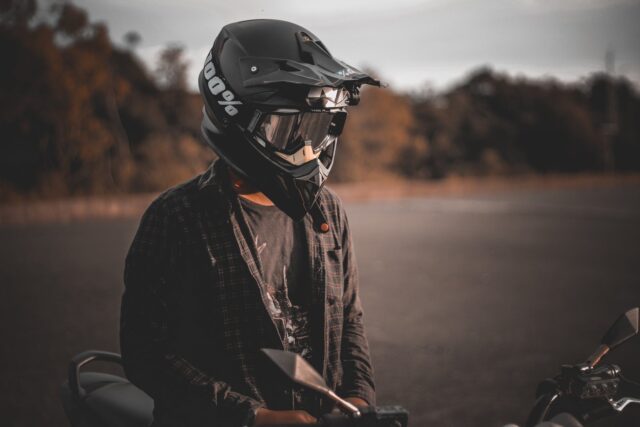
Motorcycles have been used for transportation since the early 1900s. Today, it has made commuting relatively easy for most riders, which helps them navigate through the rush hour traffic and reach different places faster. For a lot of motorcycle enthusiasts, riding one gives them a sense of freedom and excitement from their ordinary routine.
However, going on the road may have its dangers. In fact, according to the U.S. Department of Transportation, there were more than 5,000 deaths caused by motorcycle accidents in 2024. According to oklahomalawyer.com, it’s best to follow safety practices and be aware of the different traffic rules since the rider is more exposed when on a motorcycle.

Why Drive A Motorcycle?
Aside from the freedom and excitement, most people are passionate about riding because joining a motorcycle group gives them a sense of community. Riders can also create strong bonds through their hobby. Riding may also be a way to relax from a busy week or a great time to clear the mind while enjoying the view.
Moreover, motorcycling may be a smarter choice for commuters. Riding a motorcycle is believed to burn more calories compared to driving a car. It may also improve your balance and stamina since riding isn’t really for the faint of heart. Plus, it consumes less fuel, which may help lower driving expenses.
If you’ve thought about motorcycling, make sure to get a motorcycle license endorsement together with your driver’s license. Licensing regulations may vary per state so it’s best to check with the proper authorities. Also, before you start riding, here are six golden rules for driving with motorcycles:

1. Look In All Directions
Many factors may cause an accident and moving vehicles may come from all directions. It’s best to be aware of your surroundings, checking in all directions when driving and not just focusing on what’s in front. Much like crossing the street, you need to be wary of your surroundings.
For example, when crossing intersections, it’s good practice to slow down, check the traffic signs, and observe the traffic both ways. That way, you’ll avoid causing an accident or getting hit from the side by an approaching vehicle. Another example is something one should do before turning left. It’s good practice to look for incoming cars or motorcycles to avoid any collision.
2. Wear A Helmet
Wearing a helmet is one way to avoid head injury during a crash. According to the Centers for Disease Control and Prevention (CDC), helmets lower the risk of dying in a road accident by 37% and reduce the risk of getting a head injury by as much as 69%. If you’re looking for one, there are many helmet options available in retail stores and online shops. Just make sure that it follows the Federal Motor Vehicle Safety Standard (FMVSS) 218.
Although wearing one may seem uncomfortable for some, it’s always advisable to use a helmet because it can save your life. You may look for different ways to make your helmet look ‘cool.’ You can order superhero-themed helmets or customize them by using personalized bumper stickers or by giving them a painting job.

3. Make Yourself Visible
Many accidents happen because drivers fail to notice incoming vehicles, which may result in fatal collisions. To avoid this, riders should cautiously drive with headlights on and avoid blind spots. Blind spots are areas where drivers cannot see other vehicles directly or can only see them to a limited extent.
When turning, aside from using the vehicle’s turn signals, riders may use hand signals to alert the vehicles behind them. For example, riders turning left may extend their left arm with palms facing down. Riders can also opt to wear bright clothing or reflective vests, which may improve visibility, especially at night.
4. Check The Weather
Unlike driving weatherproof cars, motorcyclists are more susceptible to natural elements including wind and rain. Rainwater affects the surface of the road and makes it slippery. Driving in the rain may be challenging and hard to control, especially for beginners.
Moisture or fog may also block the rider’s helmet or goggles, which may compromise visibility and their driving. Checking the weather before leaving is always a good idea. When it rains in the middle of the ride, let it pass before hitting the road again.

5. Ride Prepared
As the saying goes: ‘preparation is key.’ Being on the road can be unpredictable and may be filled with challenges. In addition to preparing for the changing weather, riders must also be prepared to handle engine problems such as faulty brakes or breaking down in the middle of the road.
Aside from bringing a set of tools, it’s best to keep a set of spare parts including motorcycle lightbulbs and fuses. If you’re riding long distances, you may consider bringing along battery cables and a tire repair kit. To organize your tools, choose a bike tool roll that’s durable and compact.
6. Rest When Needed
Riding a motorcycle may take a lot of effort, especially when traveling for long distances or hours. If you’re riding one home after working, you should evaluate yourself first. You have to listen to your body if you want a smoother and safer drive on the way home.
Stress and fatigue may affect your ability to stay alert while on the road and may slow down response rates, which may lead to accidents when faced with sudden stops. It’s important to listen to your body and know when it’s safe and unsafe to drive a motorcycle.

Takeaway
Driving a motorcycle has been beneficial for many commuters since it allows them to navigate through traffic efficiently and a motorcycle also consumes less fuel. Motorcycle riding has many benefits including making friends, helping ease stress, and gives a sense of excitement.
However, riders may be prone to engine problems and road accidents, or even death. That’s why it’s important to follow road safety rules such as wearing a helmet, staying visible, and looking out in all directions. It’s also important to check the weather and your driving condition before heading out. Lastly, bring tools that may help you in case of emergencies.









